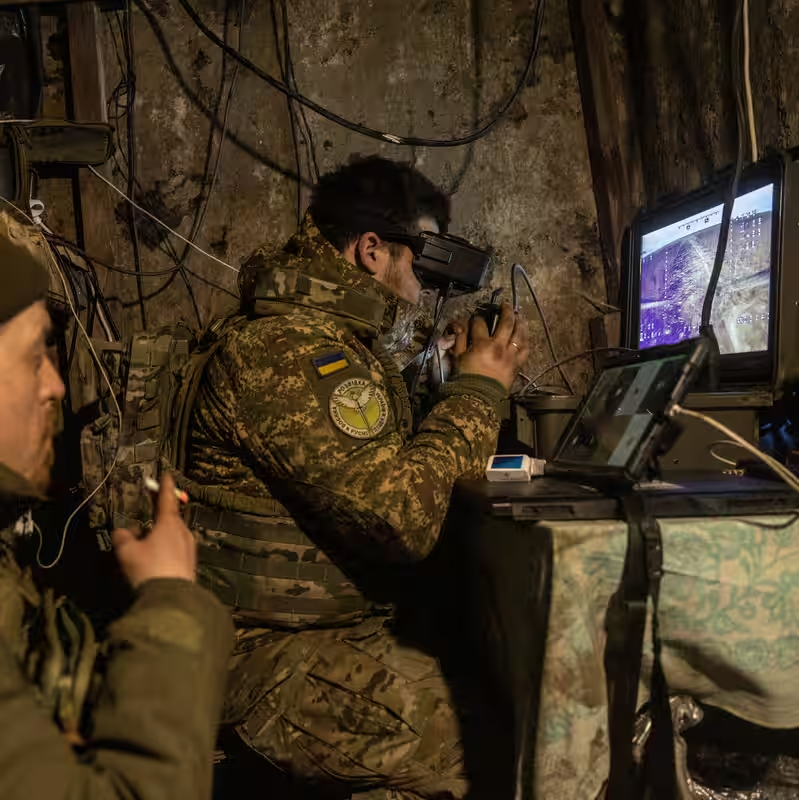Table of Contents
- The Rise of the Drone War
- Drones vs. Tanks: The New Economics of War
- Beyond the Sky: Ground and Sea Drones Enter the Fight
- Political Strain in Kyiv—and Moscow
- What This Means for the Future of Warfare
- Sources
Ukraine’s Drone War Redefines 21st-Century Battlefields
Forget tanks, trenches, and artillery barrages. The war in Ukraine has entered a new phase—one dominated not by heavy metal, but by buzzing quadcopters and fiber-optic wires. According to on-the-ground reporting from The New York Times’ international editor Philip Pan, drones now do most of the killing in the Russia-Ukraine conflict .
This isn’t science fiction. It’s the grim reality of a war where a $500 drone can disable a $5 million tank—or force a $50 million warship to retreat. And both sides are racing to out-innovate each other in what’s become a high-stakes tech arms race.
Drones vs. Tanks: The New Economics of War
Russia has dramatically escalated its drone campaign, launching over 34,000 drones into Ukraine in 2025 alone—nearly nine times more than in 2024 . Most are small, mass-produced models: cheap, agile, and deadly.
Ukraine, meanwhile, is fighting back with ingenuity. Local startups—many backed by venture capital—are designing countermeasures faster than traditional defense contractors can respond. Some drones now use spools of fiber-optic cable to avoid electronic jamming. Others deploy simple but effective anti-drone nets.
The result? A brutal cost asymmetry: “Drones worth hundreds or thousands of dollars must be shot down by missiles that cost millions,” Pan notes. This imbalance is reshaping military doctrine worldwide—and forcing generals to rethink everything from logistics to frontline tactics.
Beyond the Sky: Ground and Sea Drones Enter the Fight
The drone revolution isn’t limited to the air. In eastern Ukraine, soldiers train at facilities like the “Killhouse Academy”—a repurposed factory where recruits learn to operate unmanned ground vehicles (UGVs) that deliver ammo, evacuate wounded troops, and even conduct reconnaissance in no-go zones .
At sea, Ukraine’s “naval drones”—essentially explosive-laden speedboats—have kept Russia’s Black Sea fleet on the defensive. These kamikaze crafts, often built for under $250,000, have sunk or damaged multiple Russian warships, proving that asymmetric warfare can challenge even the most powerful navies.
Democracy Under Fire: Political Strain in Kyiv—and Moscow
While the drone war rages, both nations face mounting political pressure at home.
In Kyiv, President Volodymyr Zelensky’s attempt to weaken Ukraine’s anti-corruption agencies sparked rare public protests—even during wartime . With martial law extended and elections postponed, concerns are growing that democratic institutions are eroding just as Ukraine fights to defend them.
In Moscow, Vladimir Putin appears stable—but cracks are showing. A recent resignation by a top aide who favored peace talks, coupled with massive wartime spending (including life-changing bonuses for recruits), reveals the strain on Russia’s authoritarian system .
What This Means for the Future of Warfare
The Ukraine conflict is more than a regional war—it’s a live laboratory for the future of combat. Key takeaways:
- AI and autonomy will likely decide the next phase of the war.
- Cheap, scalable tech can offset traditional military superiority.
- Civilian innovation (startups, hackers, engineers) is now central to national defense.
- Political resilience is as critical as battlefield success.
As one Ukrainian soldier told The Times: “We don’t just fight with guns anymore. We fight with code, cameras, and courage.”




